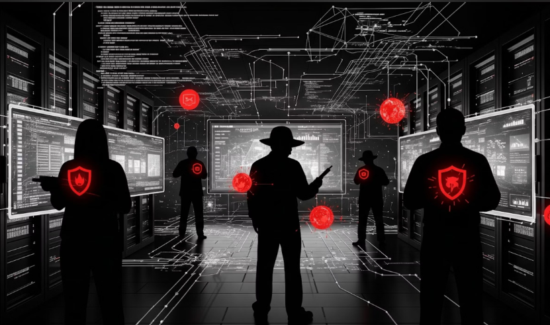Predictions: The Top Endpoint Security Threats of 2021 (And How to Prevent Them)


What are the top endpoint security threats of 2021? How can next-generation endpoint protection platforms help prevent these threats and offer your business better security?
2021 looms ever closer, bringing to an end the chaotic and stressful year of 2020. In addition to the very human and psychological challenges posed by the COVID-19 pandemic, IT decision-makers faced numerous cybersecurity challenges. The sudden and necessary shift to full remote work/work-from-home mandated new InfoSec policies unlike any previously deployed.
What 2021 might hold remains to be seen. However, we can predict that even with the promising advent of multiple COVID-19 vaccines, the pandemic may continue until the summer. Worse, hackers have yet to relent in their onslaught on business networks and devices. In fact, they use every opportunity to steal data and disrupt workflows, even using the pandemic as a smokescreen for their attacks.
You need to prepare your business against the top endpoint security threats of 2021. Here’s which ones you must fortify against the most.
The Top Endpoint Security Threats of 2021 (And How to Prevent Them)
1. Ransomware
If you take nothing else away from this enterprise, remember this: ransomware is experiencing its own dark renaissance. For a brief period of time, it looked as if cryptojacking malware may supplant it as the top malware threat facing organizations. Yet ransomware has not only reclaimed its crown, but it also appears to be accelerating.
For those unaware, ransomware breaks into a network, encrypts or steals data, and holds it hostage until the demand for payment is met. This payment demand varies, and some reports indicate hackers can negotiate with their victims, but it could reach up to $500,000 if not higher. Of course, the price could be even higher, depending on the size of your enterprise…and hackers are under no obligation to actually follow through with their end of the deal.
Yet enterprises continue to pay the ransomware, in part because they often find few other avenues to recover their data. This encourages more hackers to use ransomware, which leads to more payouts, continuing a cycle of harm.
So your business needs to select and deploy an endpoint security solution that can fortify your devices against ransomware penetration. Further, you should make sure your solution uses endpoint detection and response (EDR) This capability helps find threats that have penetrated your digital perimeter and send alerts to your IT team.
Therefore, it can speed up investigation and remediation, sometimes preventing ransomware from encrypting the data. Also, consider deploying a backup and disaster recovery solution. We just outlined a recent report on the top ransomware risks.
2. Lack of Visibility
This entry isn’t just one of the top endpoint security threats of 2021; it is a perpetual problem for businesses of all sizes. With the advent of a new era of work-from-home, this problem only looks to become more daunting, not less.
You cannot protect what you cannot see. This is the first basic maxim of cybersecurity. Without full visibility, you leave potential gateways into your network exposed. It essentially lays out the welcome mat for external actors of all skill levels.
Yet many enterprises struggle with even basic endpoint visibility. For example, many organizations struggle with mobile devices connecting to their network regularly, even as bring-your-own-devices (BYOD) cultures proliferate. Worse, few maintain visibility over the Internet-of-Things (IoT); these devices rarely possess their own firmware cybersecurity and can prove a valuable opening for attackers.
Your business must ensure your endpoint security solution can maintain visibility across all connecting devices. Aso, take the steps so your IT security team can register new devices for closer observation and user and entity behavior monitoring (UEBA) as needed.
3. Data Leaks
Here’s a question that should make your skin crawl: where is your data right now?
Probably, you responded, “in our databases.” But are you sure? Data can be copied, moved, emailed, deleted, rewritten, and otherwise transformed. Do you know, offhand, who can make those kinds of changes? Or what limitations they have to their permissions? Alternatively, do you know what data can or can’t leave your network without triggering a security alert?
If any of these questions caused you to break out into a cold sweat, that is the point. Without the right cybersecurity protections, hackers can take advantage of any of these gaps and steal data. Often, you may not even realize the data exposure until far too late (plenty of high-profile leaks begin in such a manner). The challenges expand as remote work continues and the network expands to the cloud.
Thankfully, next-generation endpoint security uses data loss prevention (DLP) to help mitigate these problems. DLP prevents sensitive data from leaving your business network without explicit permission and prevents it from being copied or uploaded to unsafe databases. In a time when businesses can generate data in terabytes every month, it should be considered a must-have.
Learn more in our Endpoint Security Buyer’s Guide.



















